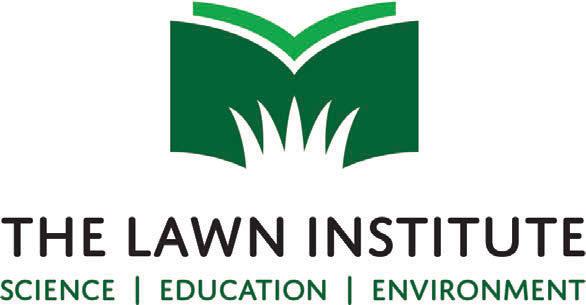
23 minute read
USDOT Issues IFR on Agricultural Commodities
THE U.S. DEPARTMENT OF TRANSPORTATION ISSUES INTERIM FINAL RULING (IFR)
ON AGRICULTURAL COMMODITIES
By Casey Reynolds, PhD
The new definition of the term “any agricultural commodity” lists horticultural products including plants, sod, flowers, shrubs, ornamentals, seedlings, live trees, and Christmas trees.
The Federal Motor Carrier Safety Administration (FMCSA) announced on November 24, 2020, an Interim Final Rule (IFR) on agricultural commodities as defined in the U.S. federal transportation code 49 CFR 395.2. Recent mandates on Electronic Logging Devices have caused confusion among truck drivers, farm owners, and enforcement officials as to who can or cannot claim important agricultural exemptions relative to Hours of Service (HOS) and Electronic Logging Devices (ELDs). TPI has been working with the FMCSA on this issue since December 2018 to make sure that U.S. sod haulers get included in these important agricultural exemptions. As TPI’s Executive Director, I am pleased to announce to the industry today that this new ruling removes any ambiguity around whether or not sod is an agricultural commodity.
Our members have expressed to TPI how important these exemptions are and we have been working behind the scenes on their behalf since 2018 to make sure they are able to get their perishable products to market. This is a classic example of the value and importance of trade associations like TPI that work nationally on behalf of sod farms. TPI could not perform this type of work without the membership dues paid by our members, and we thank them for their support.
This new ruling comes after two other important rulings in 2020 that impact sod haulers throughout the United States. On June 1, 2020, the FMCSA announced a Final Rule on Hours of Service in Agency/Docket Number FMCSA-2018-0248 that expanded the short-haul exception from 100 air miles to 150 air miles, among other things. It also allows a 14-hour work shift to take place as part of the exception; (2) expands the driving window during adverse driving conditions by up to an additional 2 hours; (3) requires a 30-minute break after 8 hours of driving time (instead of on-duty time) and allows an on-duty/not driving period to qualify as the required break; and (4) modifies the sleeper berth exception to allow a driver to meet the 10hour minimum off-duty requirement by spending at least 7, rather than at least 8, hours of that period in the berth and a minimum off-duty period of at least 2 hours spent inside or outside of the berth, provided the two periods total at least 10 hours, and that neither qualifying period counts against the 14-hour driving window.
The rule change that likely affects most sod haulers is the expansion of the short-haul exception from 100 air miles to 150 air miles and from a 12-hour to 14-hour maximum duty period. If a driver reports and returns to the normal work location within 14 hours, has at least 10 consecutive hours off-duty, stays within 150 air-miles (172.6 statute miles), and keeps time records showing time in/out and total number of hours, then they are exempt from hours of service and electronic logging devices.
The second ruling impacting U.S. sod haulers was TPI’s Application for Exemption which was published in August under Agency/Docket Number FMCSA-2019-0093. On August 5, 2020, FMCSA published in the Federal Register that they have determined sod to be agriculture and as such, sod haulers can in fact claim important Hours of Service exemptions. TPI’s Policy Consultant Jonathan Moore and I met with FMCSA officials in November 2018 to discuss this topic. After almost two years of working with the FMCSA, they ruled that U.S. sod farmers can in fact claim important agricultural commodity exemptions for getting their perishable products safely to market. We told the FMCSA at that time that we appreciate and respect the time and efforts of FMCSA officials and thanked them for their accessibility, cooperation, and transparency throughout this entire process.
That ruling alone removed any confusion around whether or not sod haulers could waive HOS and ELD requirements under the agricultural commodities exemptions granted in U.S. federal code under 49CFR395.1(k)(1). However, that still could have resulted in sod haulers having to explain this ruling to enforcement
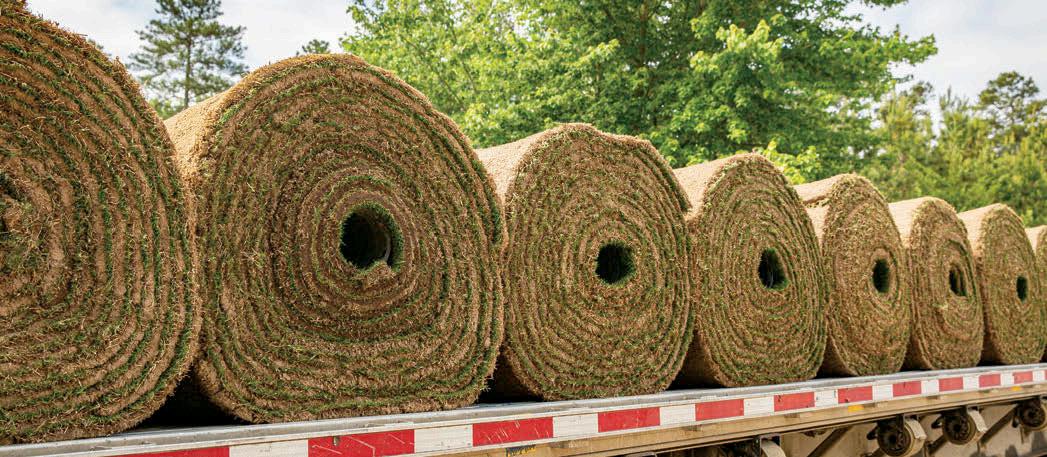
The FMCSA new ruling removes any ambiguity around whether or not sod is an agricultural commodity. officials onsite or in court. The new agricultural commodity definition should eliminate that scenario even further by actually listing sod in the language used by DOT in defining agricultural commodities. The summary of this new ruling is below.
FMCSA Summary of the Interim Final Ruling on Ag Commodities
FMCSA clarifies the definition of the terms “any agricultural commodity,” “livestock,” and “non-processed food,” as the terms are used in the definition of “agricultural commodity” for the purposes of the Agency’s “Hours of Service (HOS) of Drivers” regulations. Under current regulations, drivers transporting agricultural commodities, including livestock, from the source of the commodities to a location within 150 air miles of the source, during harvest and planting seasons as defined by each State, are exempt from the HOS requirements. Furthermore, the HOS requirement for a 30-minute rest break does not apply to drivers transporting livestock in interstate commerce while the livestock are on the commercial motor vehicle. This interim final rule (IFR) clarifies the meaning of these existing definitional terms to ensure that the HOS exemptions are utilized as Congress intended.
This IFR defines agricultural commodities under 49CFR 395.2 as follows:
49CFR 395.2 Definitions.
Agricultural commodity means: (1) Any agricultural commodity, non-processed food, feed, fiber, or livestock as defined in this section. (2) As used in this definition, the term “any agricultural commodity” means horticultural products at risk of perishing, or degrading in quality, during transport by commercial motor vehicle, including plants, sod, flowers, shrubs, ornamentals, seedlings, live trees, and Christmas trees. (Ed. Note: Sod is the second item on the list.)
This new Interim Final Ruling took effect on December 9, 2020, and TPI provided public comment in the Federal Register as requested by December 24, 2020. Barring any petitions for reconsideration, this new ruling will become final some time in 2021. Stay tuned to our Industry Harvest E-newsletter for more information as this becomes final.
Casey Reynolds, PhD, is executive director of Turfgrass Producers International. All photos courtesy of TPI.

CORONAVIRUS FOOD ASSISTANCE PROGRAM
(CFAP) UPDATE
By Casey Reynolds, PhD
TPI has been working with the U.S. Department of Agriculture (USDA) Farm Service Agency (FSA) to allow sod farmers to apply for federal relief through the Coronavirus Food Assistance Program (CFAP and CFAP2). While sod farmers are not eligible for CFAP2 relief as of the writing of this article, TPI has been in close communication with FSA throughout the pandemic sharing the impacts Covid-19 has had on our members. Although there are not specific details, we do anticipate future changes to program eligibility, and we will let members know if there are any updates to Covid-19 response programs from USDA.
U.S. Secretary of Agriculture Sonny Perdue announced on May 19, 2020, details of the Coronavirus Food Assistance Program, which provides up to $16 billion in direct payments to deliver relief to America’s farmers and ranchers impacted by the coronavirus pandemic. Eligible commodities during the first round of funding included edible crops such as corn, fruit, vegetables, livestock, dairy, and others, but nursery crops and sod were not on this list.
On September 18, 2020, the USDA announced CFAP2 with additional funds up to $14 billion that may be available to farmers who continue to face market disruptions and additional costs associated with Covid-19, and they expanded the list of eligible commodities to include many nursery and other specialty crops. In each of these cases, natural grass sod met the definitional requirements of specialty crops, but did not qualify for funding because it did not meet the requirement of a five percent or greater price reduction during the period of January 13 to April 10, 2020. However, after hearing from farmers about other impacts such as reduced volume, TPI and the USDA Farm Service Agency have been working to determine if U.S. sod farmers experienced a decrease in sales volume or price from January 15 to July 31, 2020, as compared to the same period in 2019.
We issued a call for information in early October and sod farms from throughout the United States responded with pricing and volume data for the first two quarters of 2020, when Covid-19 impacts were most substantial. The USDA Farm Service Agency received substantial input and has indicated to TPI that they will be releasing a decision in January 2021 on the eligibility of sod farmers to request relief through CFAP2 funds.
In addition to working with USDA-FSA Staff, as TPI Executive Director, I also visited with USDA Under Secretary Bill Northey in October at the farm of TPI member Turf Mountain Sod in Hendersonville, NC, to discuss this important topic and its potential impact on our members.
We will absolutely stay on top of this for our members and let them know as soon as the FSA announces any changes to this and other Covid-19 relief programs for farmers.
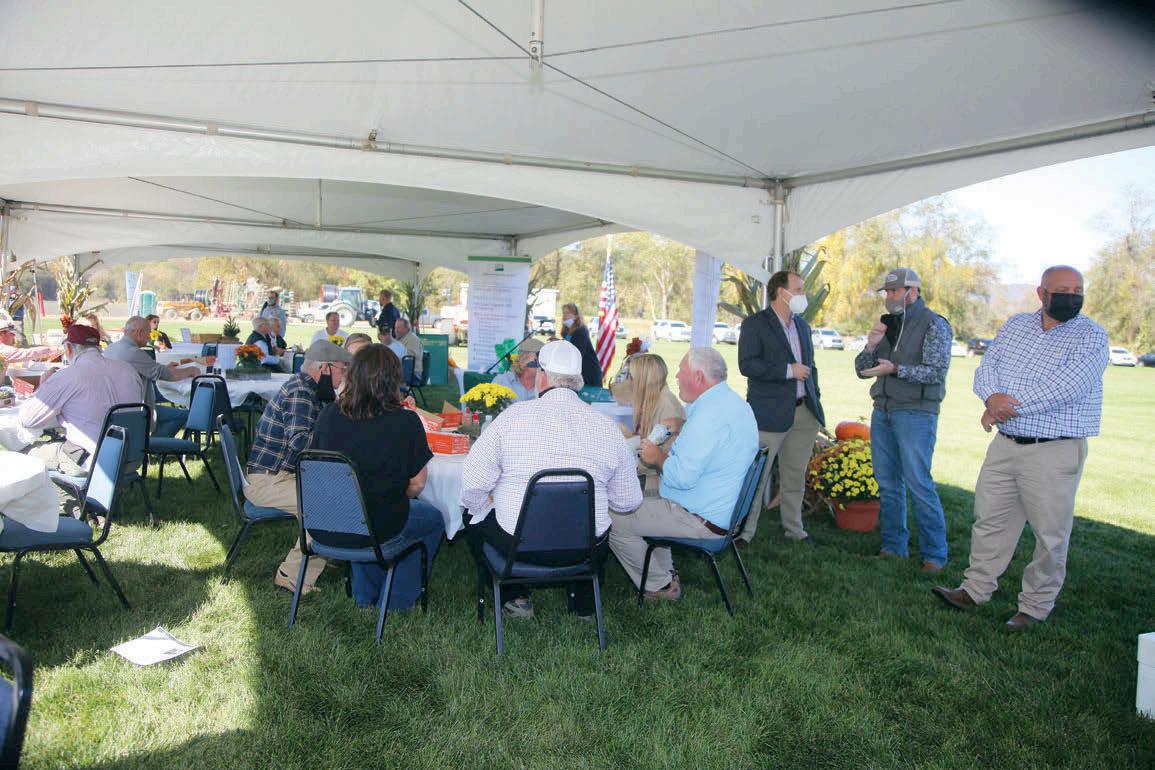
NC sod growers and Christmas tree growers gather to visit with USDA Under Secretary Bill Northey and staff to hear the latest updates on CFAP2 Covid Relief Funding.
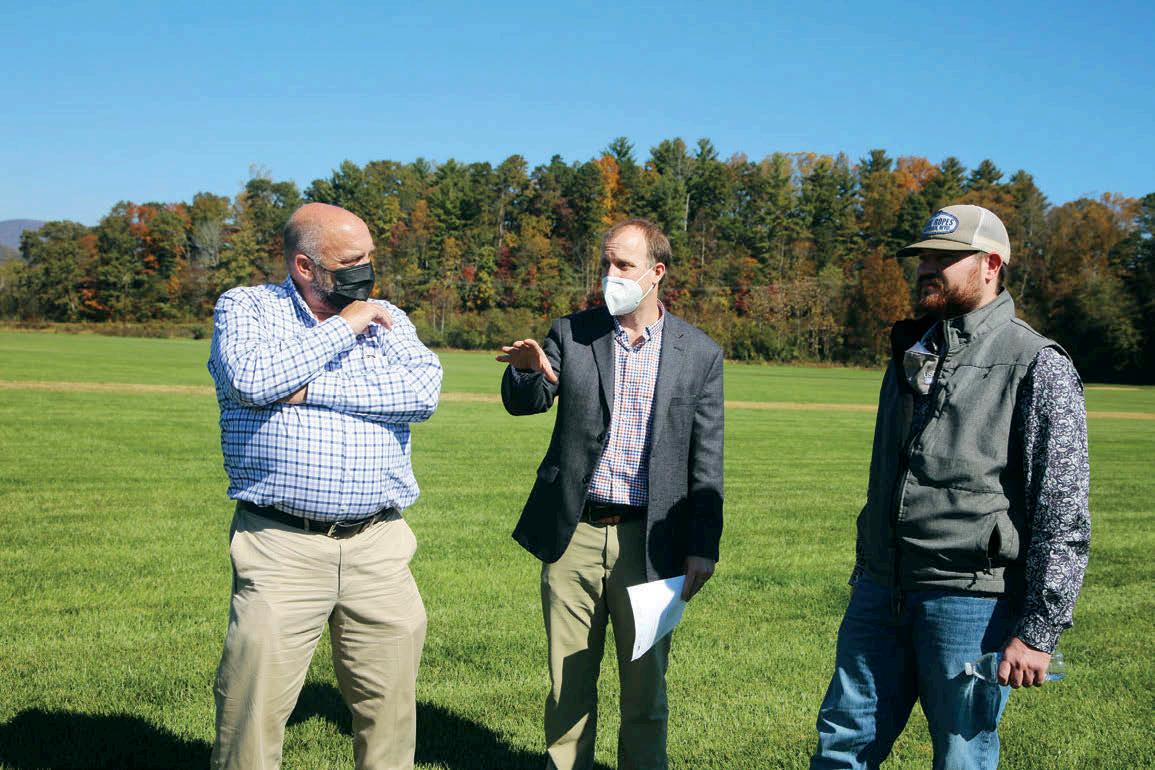
Please stay tuned to the TPI website www.TurfGrassSod.org, our Industry Harvest E-newsletter, and email announcements direct to your inbox for more information soon.
Casey Reynolds, PhD, is executive director of Turfgrass Producers International. All photos courtesy of Turf Mountain Sod.
Learn About the Many Benefits
of a TPI Membership Turf News May/June 2018 The only magazine devoted exclusively to turfgrass production News A publication of Turfgrass Producers International
November/December 2018
Turf News The only magazine devoted exclusively to turfgrass productionNewsA publication of Turfgrass Producers International
Protecting rotecting Your Investments
Equipment & Product Equip & Produ Buyer’s Guide Annual ennt n uc Gu u Turf News September/October 2018 The only magazine devoted exclusively to turfgrass production News A publication of Turfgrass Producers International
IN THIS ISSUE 25 New or Updated Products for 2019
Industry Leader Profile
Family Business Trusts ... And Much More TLI Research Update
IN THIS ISSUE
Are You Ready if Disaster Strikes?2018 Conference Recap New Lawn Brochures ... And Much More
-TERM ATION
only ded climate fall
tc. but ates ng o cut nfall, is TURFGRASS WATERING & CARE FOR NEW SOD
2018
Perennial turfgrasses are some of the most hardy and durable plants often found in urban landscapes. Like any new planting, they require attention and care during installation to ensure successful establishment. This guide contains helpful tips to make sure your newly laid sod remains healthy and ready to enjoy!
IN THIS ISSUE
More Benefits of Turfgrass
TPI Participation in NTEP
2019 Conference Preview
... And Much More







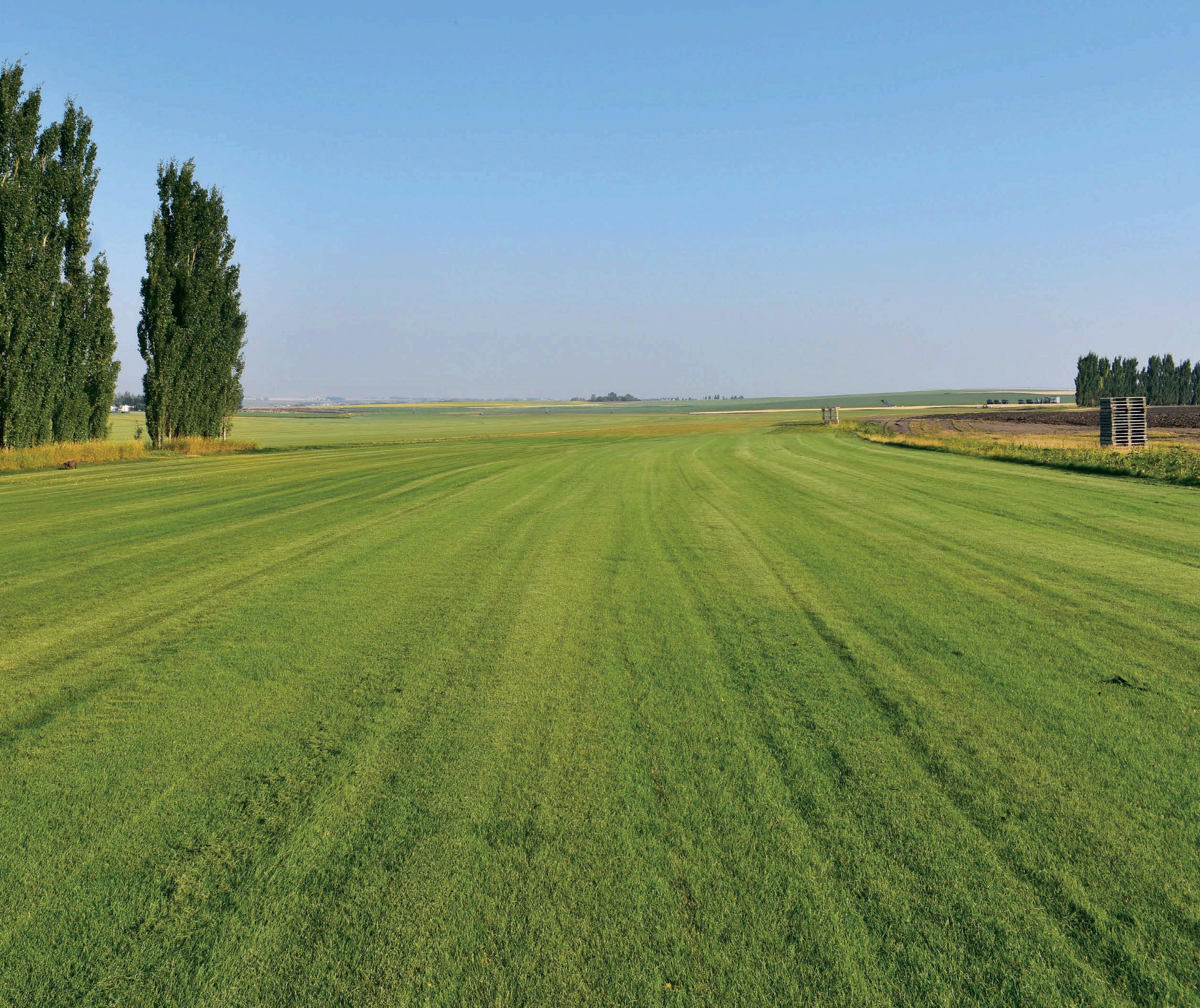
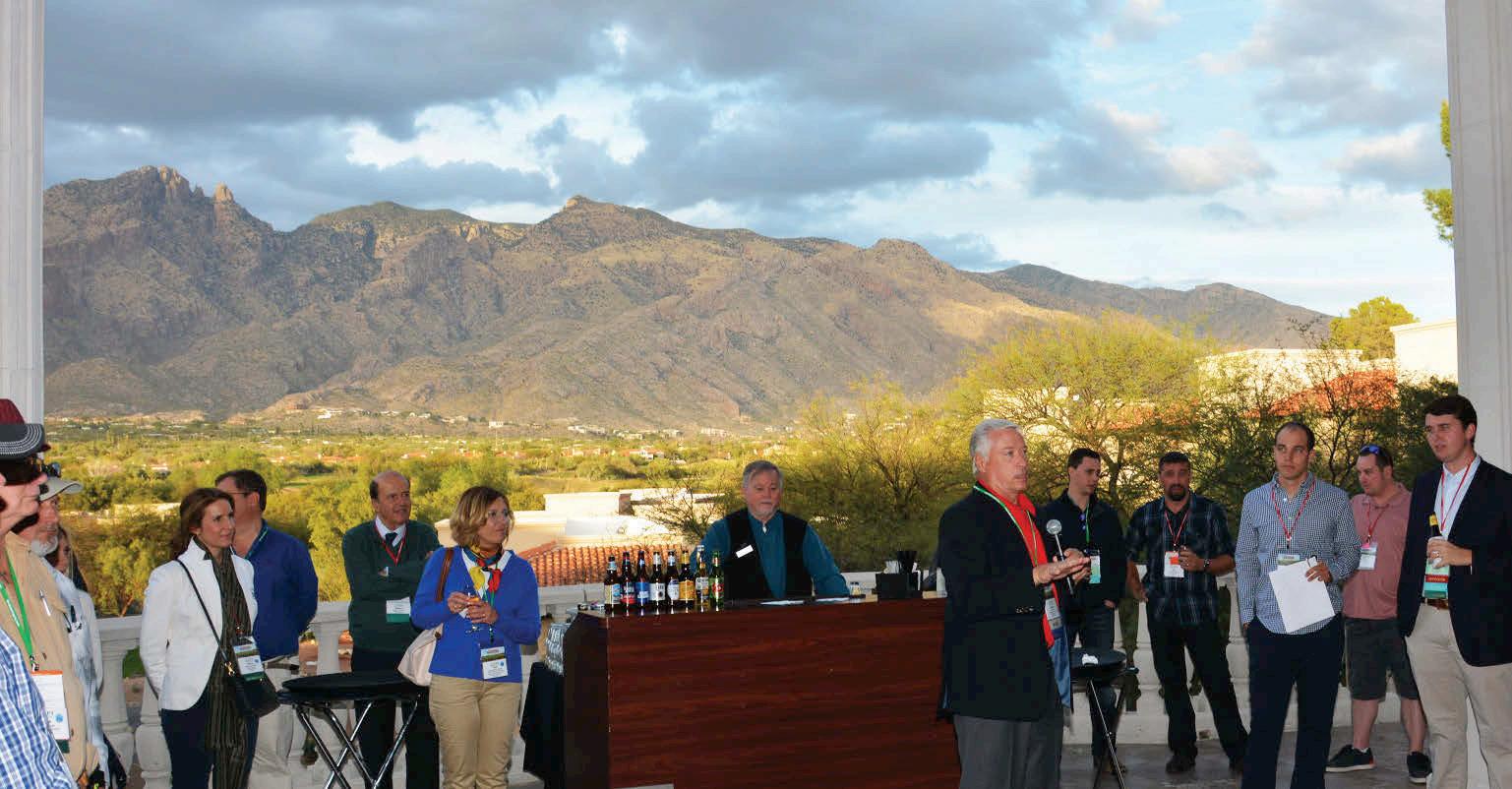
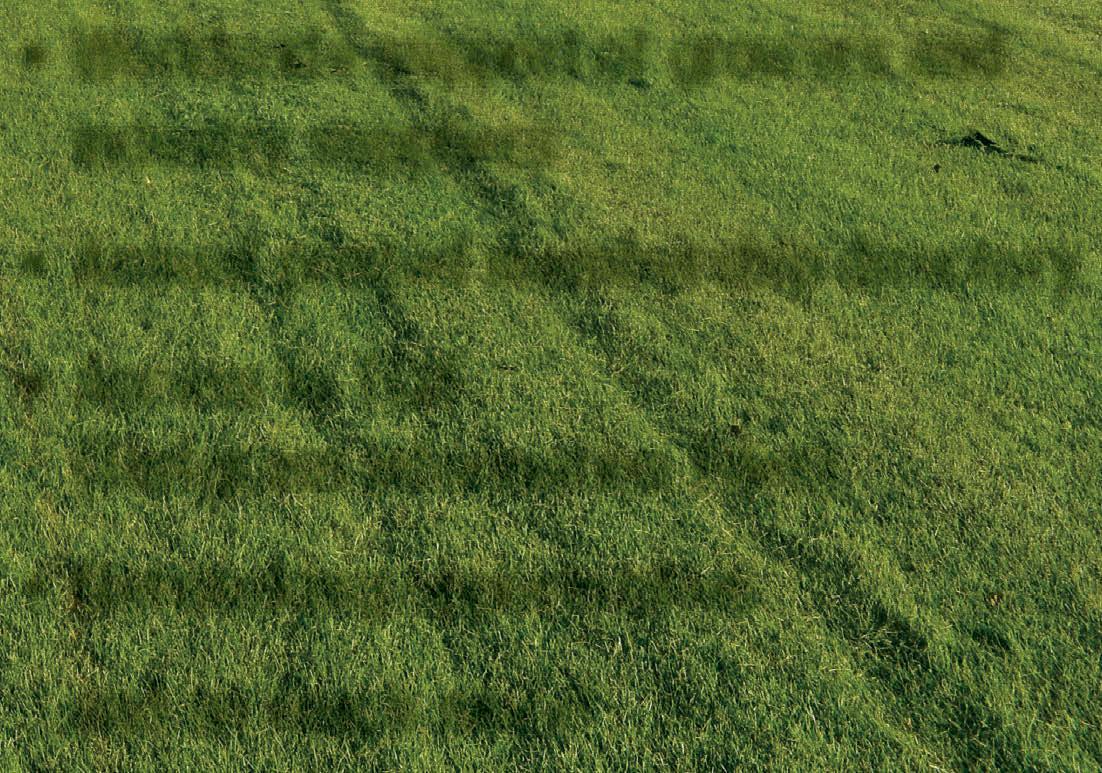
• Turf News magazine • TPI e-newsletter • Pest Control Guide (printed—new in 2019) • Members Only Toolkit (new in 2019) • Brochures for your customers that can be personalized with your logo • Worldwide support of growers and industry suppliers • Annual printed membership directory • Access to TGIF (Turfgrass Information Files) • Networking opportunities ...and so much more!
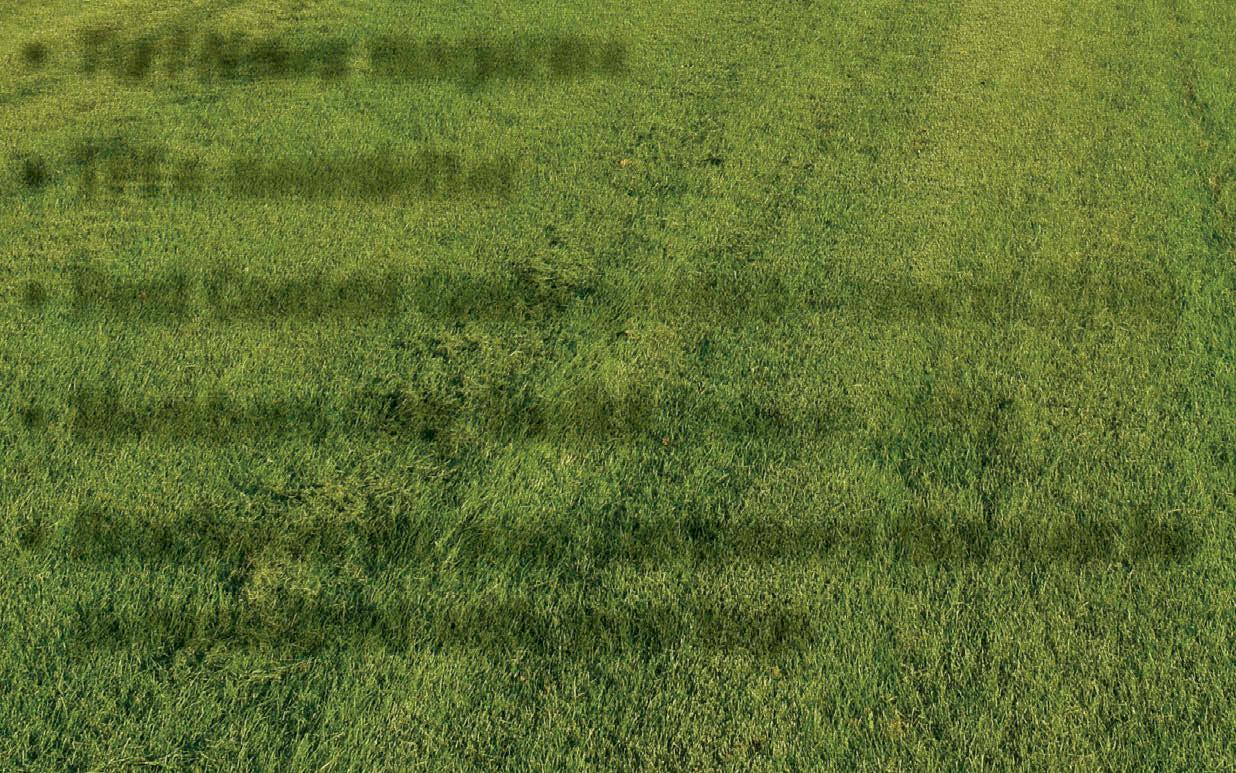
Become a member of TPI and you’ll connect with turfgrass professionals all around the world!
TPI brings similar people, farms, institutions and industry partners together from very different parts of the world to share ideas and information that lead to progress for all. When we all work together we grow and when we isolate ourselves we stagnate. TPI has helped Green Acres Turf Farm grow in many ways that likely would not have happened without the relationships made and information obtained through our TPI membership. Gary Youmans | Green Acres Turf Farm, LLC, South Carolina




U.S. SOD INDUSTRY CHECKOFF UPDATE
By Kiersten Schroeder and Casey Reynolds, PhD
Chances are most Americans come in contact with the work of a checkoff program every day without even knowing it. Whether it’s buying a new pair of jeans, enjoying a thick steak or pork chop, or even riding in a car with Goodyear tires—all of these things are possible in part because of national checkoffs.
Checkoffs All Around
The majority of national checkoffs are for agricultural commodity products like soybeans, dairy, beef, pork, and almonds, but checkoffs have expanded into other industries, such as concrete masonry and propane. Regardless of the product, most checkoffs are started for the same reason: driving new demand, whether through research, marketing, or promotion.
“In almost every case, checkoffs are the brainchild of a small group of producers who can see the enormous potential of working together as an industry,” said Ladonna Lee, 5280 Strategy. “It may be because of declining markets or the opportunity to build a new market or even improve the production of a product. At the end of the day, checkoffs work because all producers support at an equal rate and all producers benefit from the work of the checkoff.”
The path to a national checkoff is purposely long with a number of checks and balances. Once an industry has determined interest in establishing a program, they submit their case for formation to a federal agency. Getting to that point can take months, if not years, of time and dedication by producer volunteers working with other producers, state and regional associations, and related industry organizations. For industries outside of agriculture, the next milestone is an actual act of Congress to establish the framework of the checkoff. For agricultural products like sod, Congress passed the Commodity Promotion, Research and Information Act in 1996, giving the U.S. Department of Agriculture (USDA) the authority to establish a checkoff without congressional approval. The next major milestone is a draft Order, crafted in partnership between producers and the federal agency providing oversight. Producers and the general public have the opportunity to comment on the draft Order before it is finalized and then it becomes what producers actually vote on in a referendum. If a majority of producers (and in some cases, representing a majority of production) vote yes, a checkoff is then officially approved and established.
Once a checkoff board is up and running and collections have begun, volunteer producer leaders create the strategic priorities and begin funding programs. Every program funded needs to have the same objective: to increase product demand and/or expand markets. And every checkoff is led and governed by a group of volunteer producers representing their industry.
The Impact of Checkoffs
Any of the 21 national agricultural checkoffs is proof of the positive impacts a checkoff can have. When the soy checkoff was created and approved by U.S. soybean farmers in 1991, there was an oversupply of soybean oil, driving prices down. Checkoff leaders began funding research to find new ways to use soybean oil, including in industrial applications. One of those efforts was plastic polyols made with soybean oil, replacing petroleum as a primary ingredient. The checkoff remained involved in this technology, eventually connecting researchers and fabricators with end users. Today, the polyol technology funded by the checkoff can be found in countless products, including Ford vehicles, John Deere tractors, and Goodyear tires.
In 2008, Americans ate just two pounds of mangos a year. That same year, the national mango checkoff was established, and leaders began to invest in programs that researched the nutritional benefit of mangos. Research results were then used in a national advertising campaign that enticed consumers with chef-inspired recipes, health facts and inspirational images of mangos. Fast forward to 2019 and consumers now eat nearly six pounds of mangos a year, an almost threefold jump.



Softwood lumber producers established their checkoff in 2012 after two decades of market share erosion. Many of the programs funded initially were focused on promotion, including a campaign to expand softwood lumber into commercial and multi-family construction, targeting architects, developers, engineers, and contractors. After eight years of checkoff investments, the industry has experienced 6.3 billion board feet of new demand and an incremental $2.4 billion of revenue.
What Would a Sod Checkoff Look Like?
Beginning as early as 2017 and at the request of the sod industry, representatives from the sod production industry reached out to other checkoff boards, the American Farm Bureau Federation, and the USDA to learn more about how checkoffs get created and how they work. In 2020, a group of sod producers founded a Sod Checkoff Draft Formation Committee to begin exploring and writing the terms for a potential U.S. sod checkoff program. The Draft Formation Committee worked over several months to write a simple, effective, draft Order that would be desirable and impactful. This draft Order outlines the details of the key points needed for an efficient, successful checkoff program that would pass in an upcoming referendum of U.S. sod producers. The Draft Formation Committee and support team submitted this draft Order to the USDA in November of 2020 and will spend the coming months working with them to approve the program. Once approved, the draft Order will be published in the U.S. Federal Register for everyone to see and provide comments on prior to a referendum on its passage. The key details of the program follow.
Highlights of the Proposed Sod Checkoff Program
• U.S. Sod Checkoff board members will be nominated by sod producers. • The Board will be composed of 13 members who are all sod producers serving 3-year voluntary terms and shall be established as follows: - 4 members from the Northern U.S. where cool- season grasses are primarily grown; - 5 members from the Southern U.S. where warm- season grasses are grown; - 4 members from the Transition Zone region and California where both cool- and warm-season grasses are grown. • The proposed assessment rate is 1/10th of one penny per square foot of sod sold annually. • The proposed assessments will be submitted quarterly to the U.S. Sod Checkoff Board. • The U.S. Sod Checkoff Board will propose and submit an annual budget for how all funds are to be used for research, marketing and promotion, developing new markets, etc. • All U.S. sod farms will contribute. • The Order will not become effective unless approved by a simple majority (50 percent + one vote) of sod producers voting in the initial referendum that are engaged in the production and sale of natural grass sod products in the U.S.
What’s Next for Sod Producers?
Over the next several months, sod producers will have the opportunity to comment on the draft Order and learn more about why a checkoff could be the next best thing for sod. Producers can also expect several opportunities at regional and state meetings and checkoff town hall forums to learn more and address questions. “One of the most important things to happen in the months leading up to a referendum is for producers to hear directly from other producers why a checkoff is needed, how it will impact their industry and how it will impact their own operation,” said Lee. “And once a checkoff is passed, that communication remains just as important so producers understand exactly where their checkoff dollars are going and the impact the checkoff is making.”



The final milestone to a sod checkoff program will be the actual referendum, expected sometime in late 2021. That is when producers will decide whether or not to establish a checkoff.
Sod producers from around the U.S. have expressed their opinions on why the Sod Checkoff Program is so important to the future of the natural grass sod industry. A few of their comments are shared below.
“Increased pressure to remove or plant less natural grass makes a Sod Checkoff Program that would educate the public about the benefits of sod essential to our survival.”
“With no real funding to educate the public as to the benefits of natural grass, a Sod Checkoff Program would allow for such an effort—plus provide a great opportunity to fund research to increase the environmental sustainability of our product.”
“Natural grass it threatened every day by ill-informed do-gooders. We need a permanent funding mechanism like a Sod Checkoff Program to educate the public about the benefits of natural grass while supporting research to increase the reduction of inputs necessary for healthy stands of grass.”
SOD INDUSTRY CHECKOFF TEAM
Recently the Sod Industry Checkoff Formation Committee contracted with a diverse team to lead and implement a Vote Yes campaign for the upcoming referendum. The team includes Watkinson Miller, a Washington D.C.-based law firm that has been involved in multiple commodity checkoff programs; CLUTCH and Summit 5280, led by checkoff and marketing pros Ladonna Lee and Kiersten Schroeder; and G&S Business Communications, an integrated marketing communications firm.
Watkinson Miller
A Washington D.C.-based law firm, Watkinson Miller specializes in the areas of agricultural commodity promotion and research programs (aka checkoffs), agribusiness, and agriculture law. For over 35 years, Watkinson Miller attorneys have been delivering top quality, cost-effective legal services to over half of the commodity checkoff boards and have served as primary legal advisor for commodity task forces in the process of establishing new checkoff programs.
Wayne Watkinson devotes the majority of his practice to corporations and associations involved in agriculture and agribusiness, with an expertise in commodity promotion and marketing issues. Wayne has worked with several industries to establish and provide ongoing counsel to their commodity checkoff programs, including dairy, beef, soybeans, honey, mushrooms, fluid milk, watermelon, and peanuts. He is also in the midst of assisting the concrete masonry industry in establishing a national checkoff. In addition to domestic marketing activities, Wayne serves as counsel to organizations such as the U.S. Dairy Export Council that operates programs to enhance exports of agricultural commodities.
Sara Ford Burstein focuses her practice representing national commodity boards, nonprofit organizations, and small businesses on a range of corporate and commercial law matters. She regularly advises clients on corporate/ organizational formation and strategy and contract matters, as well as intellectual property matters related to trademarks and domain name disputes. Sara also assists clients that are experiencing critical leadership transitions by coordinating executive search services.
CLUTCH/5280 Strategy
CLUTCH is a hybrid marketing and consultancy firm, focused solely on B2B issues in agriculture, construction, and food and works with several commodity checkoffs. The CLUTCH team includes agronomists and former food and ag company decision makers who are grounded in the business of agriculture. 5280 Strategy is an issues and campaign-based firm with significant experience in checkoff issues and political campaigns and strategic communications.



Ladonna Lee brings decades of experience in strategic communications counsel. She has worked on countless local, state, and federal issues campaigns. She has designed and overseen the implementation for multiple checkoffs (including soybeans, beef, propane, and concrete block). Ladonna has also led multiple right-to-build projects and World Cup bids, as well as U.S. presidential campaigns.
Kiersten Schroeder brings more than 20 years of experience working with checkoffs and Fortune 500 companies. Her work has created results for start-ups, regional and multi-national brands, and producerfunded organizations. Kiersten’s unique blend of strategy and execution and her ability to develop relationships has helped her consistently deliver for several Fortune 500 companies, as well as state and national checkoff organizations ranging from soybeans to strawberries and concrete masonry to propane.
G&S Business Communications is a communications firm with more than 50 years of experience in agribusiness. Within the turf industry specifically, G&S has experience promoting companies and products within the golf, lawn care, and sod segments. The G&S team includes market researchers, media strategists, creatives, and engagement experts.
Steve Halsey is a proven senior strategist known for challenging conventional wisdom, helping brands break through the clutter, and building demand and business value. He believes the keys to growth are focus, clarity, integration, and inspiration. Steve has spent over 20 years at G&S, spearheading the development of the agency’s proprietary messaging and brand strategy services and helping to lead the creation and build-out of G&S’ digital, social and insights teams. He is actively engaged in the communications industry as a member of the International Association of Business Communicators and the Public Relations Society of America and as an elected member of the Operating Committee of Page Society’s Page Up organization. Lyndsey Newnam brings more than a decade of direct expertise in the turfgrass industry, working with producers, superintendents, researchers, media, marketers and more. Her fourteen-year tenure with G&S has resulted in continual business growth and award-winning campaigns for her clients, including several top industry awards for campaigns focused on communications in turfgrass. Lyndsey draws on deep industry expertise to shape integrated, targeted campaigns including media relations, writing, event planning, and strategic development, that resonate with customers and help meet client business goals.
Chris Martin is an award-winning creative known for compelling story-based experiences and finding engaging points-of-view in home and lifestyle markets. Chris has directed award-winning campaigns supporting the HGTV Dream Home Giveaway franchise, supporting sales and marketing at The Home Depot and co-creating the sports journalism brand, CNN Sports Illustrated. He strives to share brand-specific stories about how things work and make life better, while giving voice to technical features and performance data.
CHECKOFFS CAN GENERATE GREAT ROI
A common method checkoffs use to measure the return on investment for producers is through an economic-impact study. In most cases a Return-on-Investment (ROI) study is mandated and conducted on a regular basis by an independent, third-party economist who analyzes all supply- and demand-enhancing programs. Following is a list of recent ROIs from a variety of checkoff programs which shows the return on every $1 checkoff investment.
Almonds—$6.20 Beef—$11.91 Cotton—$4.00 Dairy—$4.78 Eggs—$9.04 Mangos—$11.51 Pork—$25.00 Soybeans—$12.40
Kiersten Schroeder is vice president, Reputation+Relevance, with CLUTCH, an agriculture marketing and consulting firm that works with several commodity checkoffs. Casey Reynolds, PhD, is executive director of Turfgrass Producers International.


